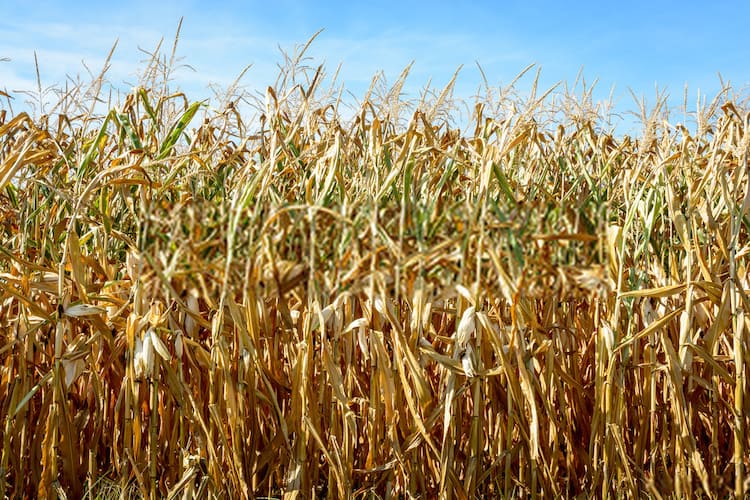Even with a lot of attention and love, there can be many reasons why your plant may experience stunted growth. If you're currently facing this issue in your garden, you're going to learn how to fix stunted growth in plants today.
Various factors could serve as a determinant for this condition; it could be a factor in your plant environments such as temperature extremes, drought, water-logged soil, soils high in clay, nutrient defiance, and lots more.
These abnormalities can occur at any time of the plant growth cycle. Luckily there are many techniques available on how to handle stunted growth in plants by tackling the conditions that cause stunting or avoiding them altogether.
Let's get started!
Identifying Stunted Growth in Plants

When faced with a problem relating to stunted growth in plants, the challenge becomes how to analyze and identify the cause of the problem.
Host problems could cause stunted growth in plants. Diseases like root rot and pests like bugs may influence growth adversely because they feed off the nutrients of the plant. Environmental stress factors may also be causative agents as to why plants may have stunted growth.
For example, unbalanced PH, poor soil nutrition, presence of weeds all contribute to the growing problem.
As a gardener, you may think all plant-related problems are caused by insects, but in the real sense, not all plant problems are caused by diseases or insects. Sometimes, a sick plant could be afflicted from a nutrient deficiency or overabundance of bad gardening practices.
The easiest way to identify growth abnormalities in the plant is often by paying a close look to the leaves, and plant structure, any manifestation of discoloration or deformity in the leaves and plant posture is an indication that.
However, many plant-related diseases exhibit the same signs and symptoms, and it is often a mixture of several other problems, so tackling the problem may be a bit of a trial and error until you hit the jackpot.
Before you try to fix your plant by overwatering or over nourishing and end up aiding their death, ensure you have carefully observed the plant, and you know its regular growth pattern.
Also, ensure that you have correctly observed what is wrong with the plant by researching to find similar problems associated with that of your plants.
Then match up your finding with current observations to achieve a definite diagnosis and then eliminate other apparent causes for sickly plants.
Follow these procedures to identify abnormalities in your plant:
- First, start by evaluating the plant's site, check for signs of insects and symptoms of diseases
- Leaf discoloration from bright green to bright yellow (or the usual color associated with the plant)
- Take note of the temperature, extreme temperatures may lead to cold or heat which will slow plant growth and affect flowering and fruit set.
- An overdose of fertilizer can lead to salt injury. Your plants may look burnt with a blackened look, or they may start to sag, at this point even watering can't save them.
- Overwatering or under watering or a general lack of water can lead to stunted growth and plant death. A wet plant season combined with a poorly drained soil that is too compacted with clay or container may lead to stunted growth in plants.
- Inspect the base of the soil near the plantings daily, weekly, or every ten days, depending on the frequency of rainfall or watering.
How to Fix Stunted Growth in Plants

One of the best ways to guarantee proper growth for your plant is to maintain growth conditions that result in optimum growth. Study your plant and its growth requirements and provide adequate water, nutrition, and light.
Ensuring the growth requirements will prevent environmental stressors from stunting the growth of your plants. It will also increase your plant's defense mechanism against pests and diseases that can cause stunted growth to your plant.
Here are some factors that lead to healthy growth in plants:
Sow your plants in well-drained soil high in organic compost.
Ensure to use high-quality seed and transplants. Inspect transplants thoroughly before purchase. Do not purchase plants with roots that are color brown.
Maintain an evenly moist and adequately fertilized with a highly soluble fertilizer after transplanting or after seedlings emerge.
Avoid causing damages to plant roots through plowing, tilling, or walking on the soil.
Protect plants from environmental stressors like cold and winds with row cover material like an empty gallon of a plastic jug with the base removed
Temperature: Plants are susceptible to heat; they thrive best in the right temperate suitable for their type.
Relatively low light intensity: When growing plants, especially the young ones, they are yet the gain ability to process high-intensity light.
Adequate light distance: Always keep in mind the distance between the plant and the lights, which depends on the temperature and its intensity.
You can carry out the “hand test," by the tip of your finger on the top of your plants for one minute. If the soils feel too hot then it may be too much light for your plant too, it's probably too much heat for the plant also.
Try to change the position of the plant. Meanwhile, for outdoor plants, always keep an eye on your plants and make sure the soil never dries up.
Nutrition: Plants need an adequate and balanced dosage of nutrients, or they may experience nutrient burnt as a result of heavy mixtures. Avoid the need to fertilize the soil in the coming weeks until fully absorbed
Pot size: After germination, place your seed/seedling in a small pot with a soluble material that allows proper soil drainage for best results. Then move your plants to a bigger pot or the ground as you please.
Watering: Always check your soil with a soil moisture meter or by feeling with your fingers; do not water unless it feels dry to the touch or the top 6-8 inches of soil has begun to feel dry.
For overwatering situations, if the soil is still logged with water after one week, you will need to take immediate action on the situation.
Gently raise the planting bed. This a way of temporarily removing the existing plants, then incorporating compost underneath the planting bed to help improve soil drainage. Or head to a reliable garden shop and purchase a well-drained topsoil mix to help improve the soil properties.
Note: You could try using a sprayer to water young plants to avoid overwatering. Use clean water only.
PH levels: Ensure to maintain the pH levels required by your plants for optimum growth. The right ph. level will assist your plants in absorbing all the nutrients in the soil.
Relative humidity: A very dry environment may cause your seedling to dry up quickly. Keep it around average.
Conclusion
The bottom line is that several factors may affect your plants adversely and result in stunted growth, but there are preventive measures you can take to ensure that never happens.
In cases when plants are not growing as they should, apply the techniques as seen in this handy guide on how to fix stunted growth in plants.
Always keep an eye on these factors outlined in this guide to serve as preventive measures against further challenges in the future.





Leave a Reply